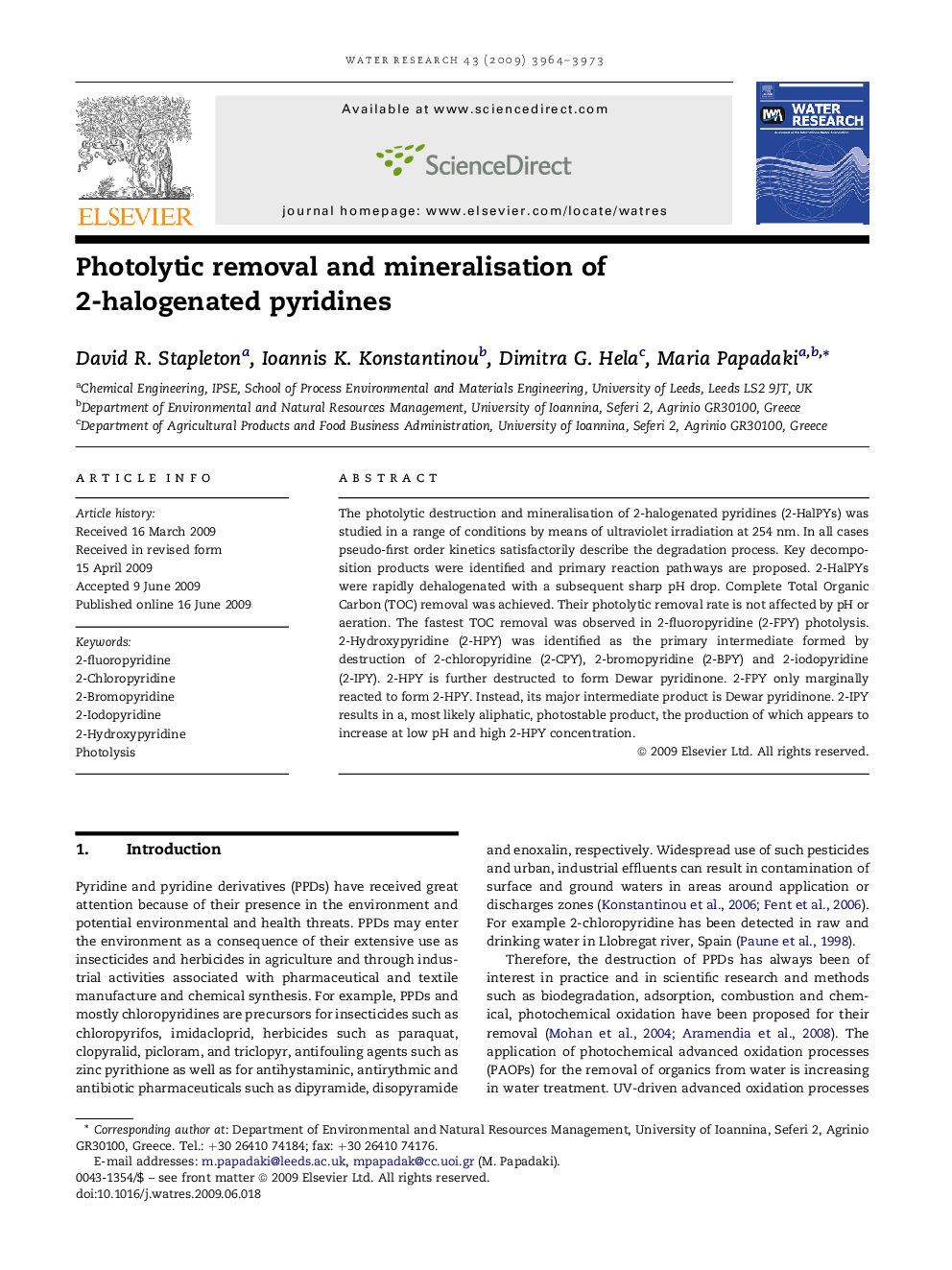| کد مقاله | کد نشریه | سال انتشار | مقاله انگلیسی | نسخه تمام متن |
|---|---|---|---|---|
| 4484504 | 1316923 | 2009 | 10 صفحه PDF | دانلود رایگان |

The photolytic destruction and mineralisation of 2-halogenated pyridines (2-HalPYs) was studied in a range of conditions by means of ultraviolet irradiation at 254 nm. In all cases pseudo-first order kinetics satisfactorily describe the degradation process. Key decomposition products were identified and primary reaction pathways are proposed. 2-HalPYs were rapidly dehalogenated with a subsequent sharp pH drop. Complete Total Organic Carbon (TOC) removal was achieved. Their photolytic removal rate is not affected by pH or aeration. The fastest TOC removal was observed in 2-fluoropyridine (2-FPY) photolysis. 2-Hydroxypyridine (2-HPY) was identified as the primary intermediate formed by destruction of 2-chloropyridine (2-CPY), 2-bromopyridine (2-BPY) and 2-iodopyridine (2-IPY). 2-HPY is further destructed to form Dewar pyridinone. 2-FPY only marginally reacted to form 2-HPY. Instead, its major intermediate product is Dewar pyridinone. 2-IPY results in a, most likely aliphatic, photostable product, the production of which appears to increase at low pH and high 2-HPY concentration.
Journal: Water Research - Volume 43, Issue 16, September 2009, Pages 3964–3973